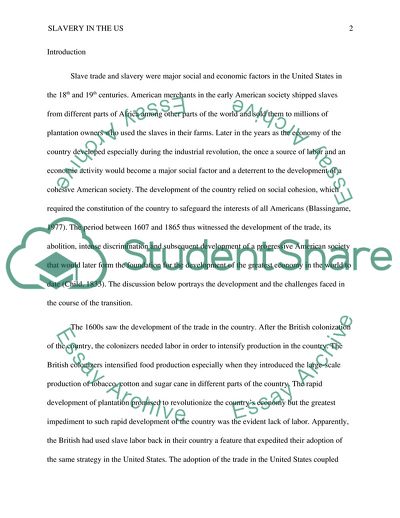Cite this document
(The Changing Place of Slaves and Slavery in the American Nation from 1607 to 1865 Essay Example | Topics and Well Written Essays - 2000 words, n.d.)
The Changing Place of Slaves and Slavery in the American Nation from 1607 to 1865 Essay Example | Topics and Well Written Essays - 2000 words. https://studentshare.org/history/1820330-the-changing-place-of-slaves-and-slavery-in-the-american-nation-from-1607-to-1865
The Changing Place of Slaves and Slavery in the American Nation from 1607 to 1865 Essay Example | Topics and Well Written Essays - 2000 words. https://studentshare.org/history/1820330-the-changing-place-of-slaves-and-slavery-in-the-american-nation-from-1607-to-1865
(The Changing Place of Slaves and Slavery in the American Nation from 1607 to 1865 Essay Example | Topics and Well Written Essays - 2000 Words)
The Changing Place of Slaves and Slavery in the American Nation from 1607 to 1865 Essay Example | Topics and Well Written Essays - 2000 Words. https://studentshare.org/history/1820330-the-changing-place-of-slaves-and-slavery-in-the-american-nation-from-1607-to-1865.
The Changing Place of Slaves and Slavery in the American Nation from 1607 to 1865 Essay Example | Topics and Well Written Essays - 2000 Words. https://studentshare.org/history/1820330-the-changing-place-of-slaves-and-slavery-in-the-american-nation-from-1607-to-1865.
“The Changing Place of Slaves and Slavery in the American Nation from 1607 to 1865 Essay Example | Topics and Well Written Essays - 2000 Words”. https://studentshare.org/history/1820330-the-changing-place-of-slaves-and-slavery-in-the-american-nation-from-1607-to-1865.


